WELCOME TO HERB CAMP 2020! In this third of three weeks of herb camp, the theme is “Herbal Creativity”. Today we are exploring St. Johns Wort, a beautiful nervine herb that can help with pain, ease stress, help you sleep, and support you during mild to moderate depression. Its a non-addicting nervine and an essential ingredient in trauma salve or any first aid salve that you make. When the St. Johns Wort flowers bloom in late June to early July, herbalists gather the open and unopen blooms for both tinctures and ruby red infused oils.
Identifying St. Johns Wort
St. Johns wort (Hypericum perforatum) is an herb of waste lands and dry pastures. You’ll find it growing along with self heal, yarrow, and mullein in disturbed clearings, in partial shade or full sun.
- It grows 1 to 3 feet high.
- Opposite 1 inch, smooth margin, leaves
- 5 petaled flowers with protruding yellow stamens
- Yellow flowers form clusters at the top of the stems.
- The petals and leaves have dark red, purple to black dots on the margins giving it the botanical name perforatum, for the perforations. Flower garden varieties of St. Johns wort lack these black dots and are not medicinal.
- Flowers twist after being pollinated
- Flowers and buds release a deep red to purple oil when crushed between the fingers
- Picking the flowers and buds will stain your fingers deep blue to purple
- 3 part seed capsules contain many tiny light to dark brown seeds
Medicinal Use:
The plant is associated with the sun, bringing light to dark situations. It can resolve mild to moderate depression, especially those associated with frustration. Taking the tincture for several weeks can reset the brain’s chemistry and help elevate mood. It is not useful in bipolar depression.
It is the best remedy for sciatica, alleviating the pain and correcting the pinched nerve.
The infused oil is useful for trauma and injuring, especially for deep wounds, healing from the bottom to the top.
The oil is useful for skin abrasions, ulcerations, moderate burns, as it stimulates granulations and capillary regeneration (M. Moore)
Antibacterial
Pain relief
Bruises and trauma
In December 1984, the European Commission E approved the internal use of St. John’s wort for psychovegetative (psychoautonomic) disturbances, depressive moods, anxiety, and nervous unrest. Oily Hypericum preparations are approved for dyspeptic complaints. External use of oily preparations of St. John’s wort is approved for treatment and post-therapy of acute and contused injuries, myalgia, and first-degree burns. (source)
When to harvest
Harvest the flowering from June to August. When you take the flowers, more flowers are produced by the plant.
How to preserve
The dried plant material loses its potency within 3 months. Tincture only the fresh flowers. Fill the jar to the top with fresh flowers. Push the flowers down and add more until the jar is full. Pour over grain alcohol. Dislodge any air bubbles. Top up with more alcohol if necessary. Cap tightly and shake it once a day for a month. Strain and reserve the tincture.
Tincture: 1:2 Use 20 to 30 drops up to 3 times a day.
Infuse oil — let the flowers wilt over night. This removes some of the water and concentrates the hypericum, hypericin, and the resins. Top up a jar with wilted flowers. Cover in oil. Dislodge any air bubbles. Top up with more oil. Use a fermentation weight to keep the flowers below the surface of the oil and prevent mold. Let macerate for 30 days. The oil will change color to a deep, ruby red. Strain. Press the spent flowers to get as much infused oil as possible from them. Allow the oil to sit overnight so that any remaining water sinks to the bottom. Decant into a clean jar, leaving the water-soluble juices behind.
The oil can be used externally or taken internally 1 teaspoon, three times a day.
Both the tincture and the infused oil are shelf stable and active for years.
Contraindications:
St. Johns Wort should not be taken along side MAO inhibitor-type antidepressants. If you are on prescription medication, speak to your medical professional before using St. Johns Wort internally. Topical use is safe.
Many books caution against sun exposure when taking St. Johns Wort because albino grazing animals have had trouble after grazing large amounts of flowers in poor pasture. I have not seen any reports of St. Johns Wort causing sun sensitivity in humans. In fact, I’ve seen the opposite effect, those taking St. Johns wort who used to burn in the sun, often have better tolerance of the sun with St. Johns Wort use. Use your own wisdom, discretion, and common sense.
Note: St. Johns Wort is considered a noxious weed in some areas, and therefore it is illegal to sell seed to these areas. Consult your local laws before planting St. Johns Wort in your garden. Where it is considered noxious, be wary of spraying. Any plants that have been sprayed should have signage. Do not harvest sprayed plants for medicine.
Herb Camp Challenge
Today’s challenge has two parts.
- Locate St. Johns Wort in the wild. St. Johns wort is found all over the Northern Hemisphere, any where that there is disturbed land. If you find plantain and stinging nettle, self heal, yarrow, and mullein, St. Johns Wort will be close by. Look for the yellow flowers about a foot to 2 feet high at the edges of the road. (Don’t harvest from the road way, though, move further in from the road for harvesting, by at least 25 feet or even 50 feet from a major highway. Always get permission when harvesting on private land. Note the location of the patch, so you can come back when it is in flower.
- Harvest St. Johns Wort flowers in season. Wilt them overnight. Infuse in oil. (This will take about a month so you will complete this project later. Come back to this post when you are done and let us know. Or post a picture in the Facebook group when you are done.)
To make a salve with the infused oil see the recipe here.
Note: Click the small arrow on the LEFT to go to the previous day’s Herb Camp Challenge. Click the small arrow on the RIGHT to go to the next day’s Herb Camp Challenge.
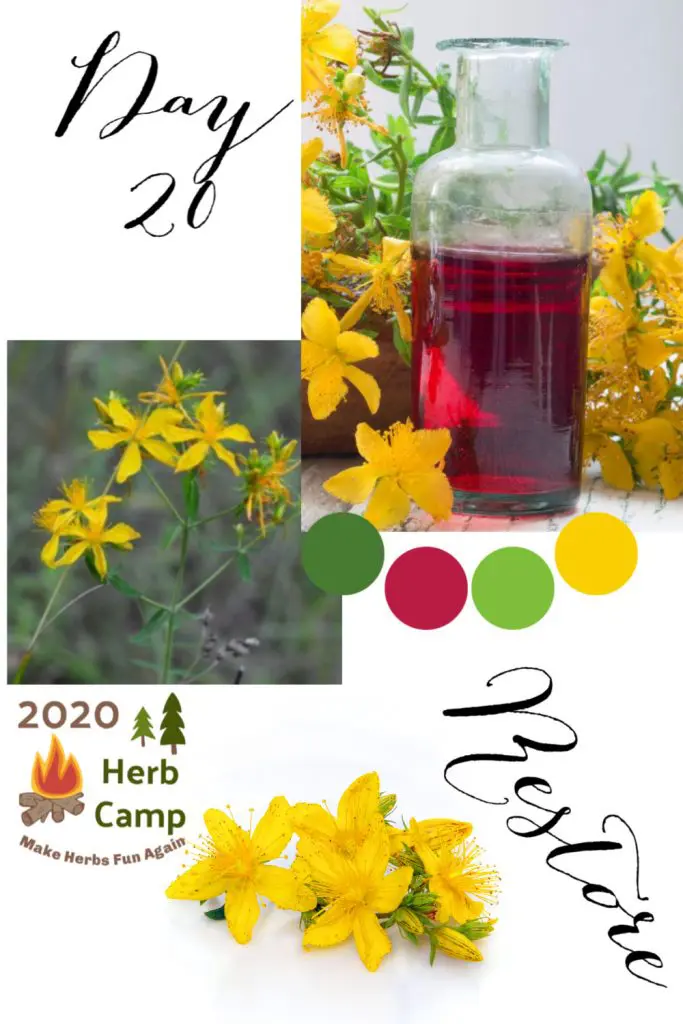
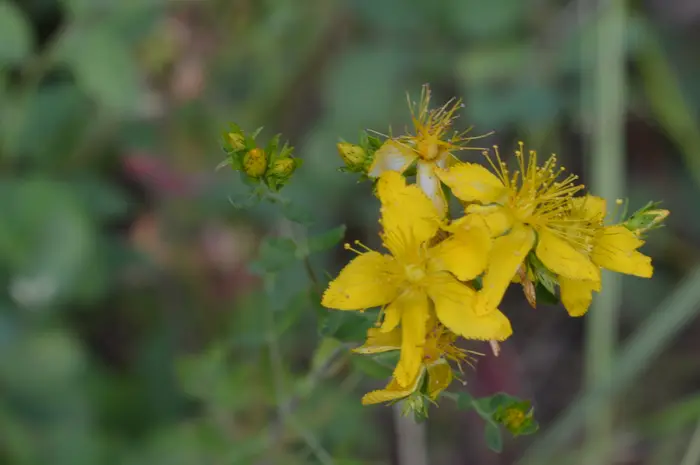
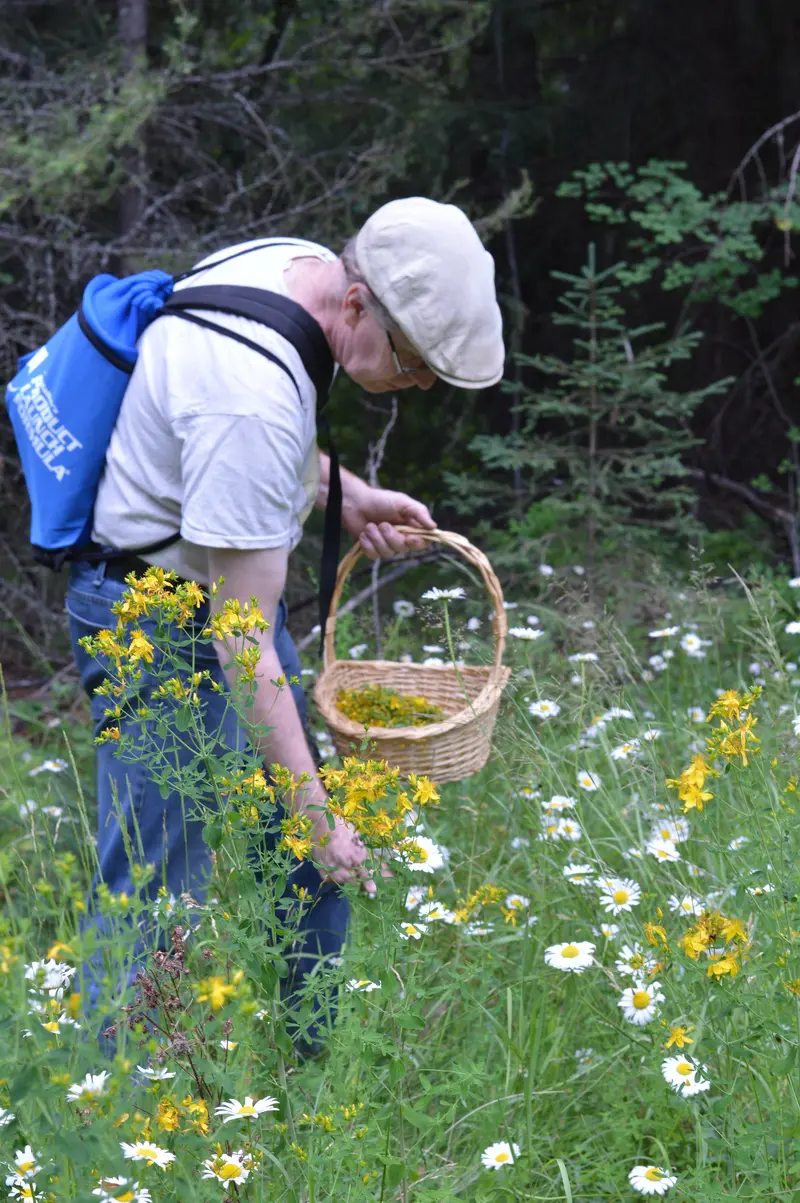
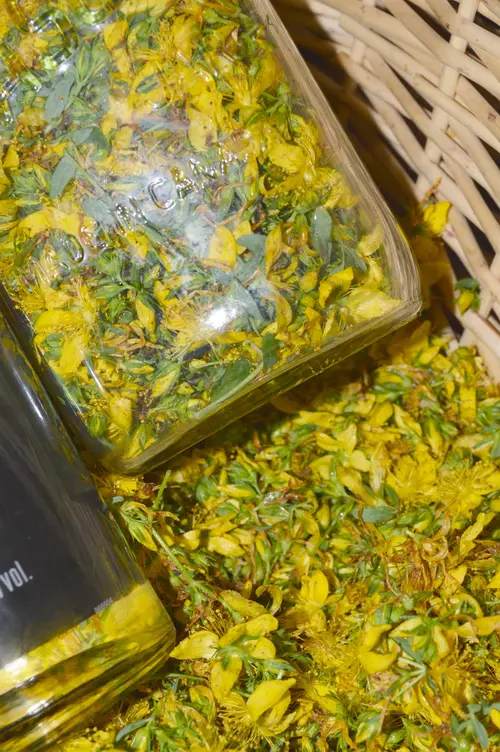
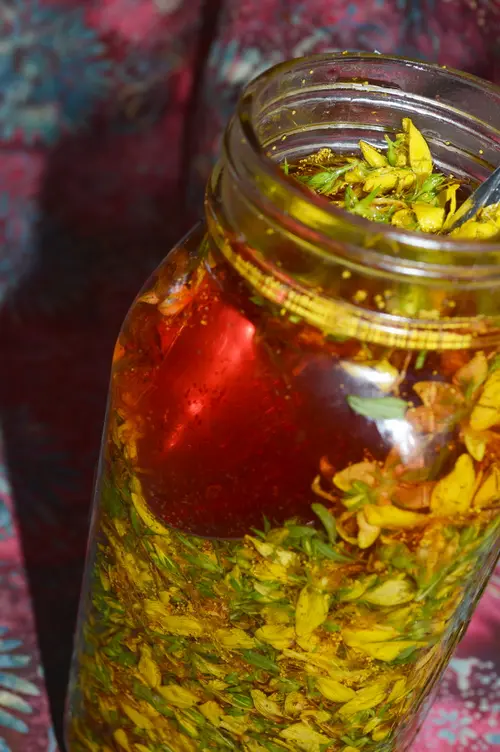
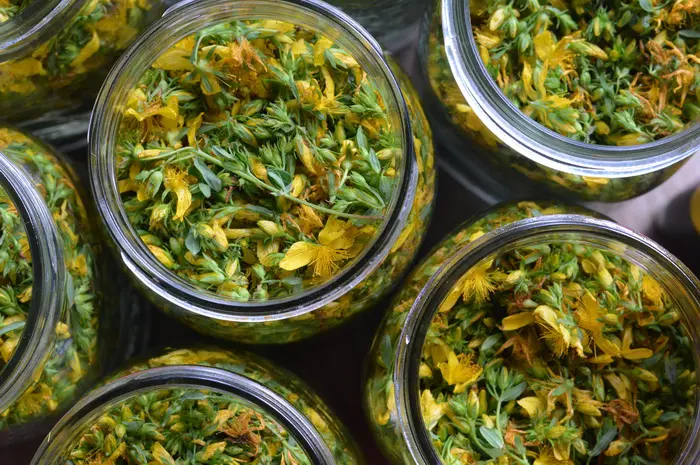
I bought a St. John’s Wort bush.. now I’m concerned I bought the wrong plant..
I finally found one plant in my field and have a small amount of flowers infusing in oil. No red ye!